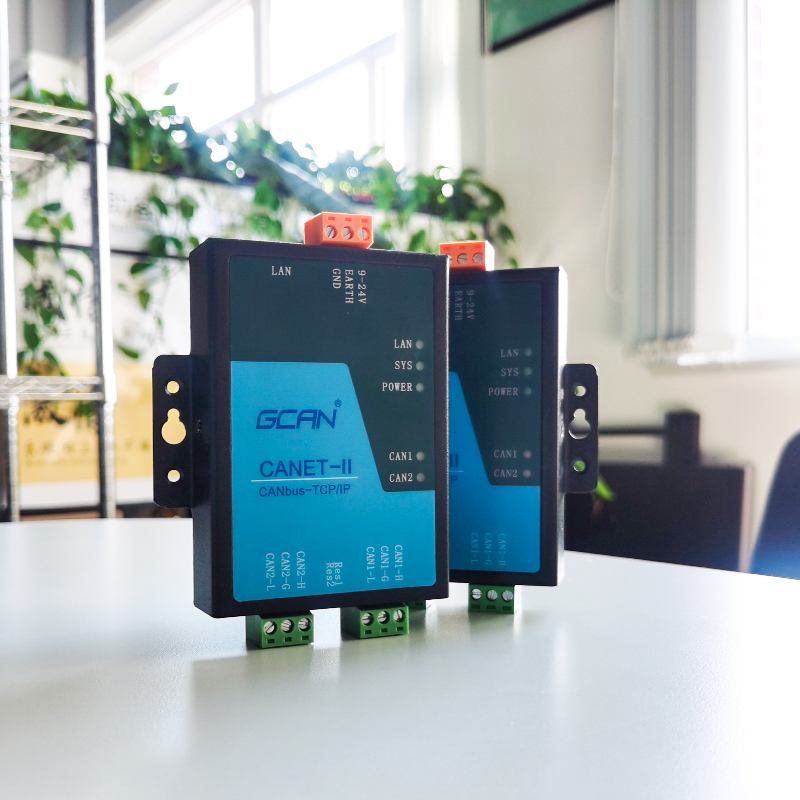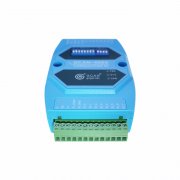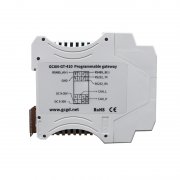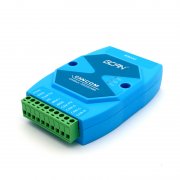The necessity of Ethernet to CAN module
Now when we talk about remote CAN data relay equipment, what do we think of? Yes, it is a fiber-to-CAN repeater. This kind of equipment relies on light as the relay medium, which has fast data transmission speed and relatively long distance. It is an ideal tool for extending CAN communication. Of course, there are more than one devices in the world that can extend CAN communication. They have their own specialties and are suitable for CAN data relay in different scenarios. Among the many types of CAN relay modules, the Ethernet-to-CAN relay is actually one of the best in performance. Today, let's talk about some of these tools.
Since it is called an Ethernet-to-CAN repeater, this type of tool is naturally to realize the mutual conversion between CAN data and Ethernet data. Some people may think that the CAN bus is a properly industrial bus, while Ethernet is a network used in our daily lives and has little connection with industry. This is not the case. Industrial Ethernet is not unavailable, but has not yet developed to the point where we are familiar with it. For example, with the distance of cars, we can often hear the term Internet of Vehicles now. Then the industrial Ethernet must be used. Otherwise, if there is no network, you still How to network?
Compared with the CAN bus and Ethernet, in fact, the two sides still have their own merits at least for now, for example:
1. In terms of data transmission speed, Ethernet is significantly faster, has a larger bandwidth, and can carry more information. This is why we are now vigorously developing industrial Ethernet or automotive Ethernet. In contrast, the current maximum bandwidth of the CAN bus is only 1000Kbps, which is really not a hierarchical opponent compared to Ethernet. So, is the CAN bus also so unbearable elsewhere? Let's watch.
2. In terms of data transmission distance, the advantage of Ethernet is also obvious, because the farthest data transmission distance of CAN bus is only ten kilometers, the reason why it uses optical fiber or Ethernet network as the relay medium is itself. The transmission of information is not too far. At this point, Ethernet also wins.
3. In terms of the safety and stability of information transmission, CAN bus is far stronger than Ethernet, because the principle of CAN bus information transmission is differential voltage signal transmission. As long as the 2V voltage difference between CAN high and CAN low exists, bus communication basically will not affected. At the same time, the CAN bus has a CRC error detection mechanism. If a node has a problem, it will voluntarily exit the bus communication without affecting or destroying the bus, preventing bus communication from crashing. As for Ethernet, it does not currently have this capability. At this point, the CAN bus wins.
4. In terms of technical maturity and development difficulty, CAN bus is superior to industrial Ethernet. Since the CAN bus was introduced in the 1980s and 1990s, all aspects have been thoroughly studied, and the technology is very mature. However, compared with civil Ethernet, the development of industrial Ethernet has a long way to go. , But as long as you understand, replacing the CAN bus is a matter of minutes.
From the above comparison, we can see that, in fact, Industrial Ethernet is more promising than CAN bus, but it still needs time to study. At present, Ethernet is more realistic as the relay medium of CAN bus. In order to meet everyone's related relay needs, Shenyang Guangcheng Technology has also introduced a special CAN-to-Ethernet relay GCAN-202. Shenyang Guangcheng Technology GCAN-202 CAN to Ethernet Repeater is a high-performance CAN-bus communication interface card that integrates 2 CAN interfaces and 1 Ethernet interface. Using GCAN-202 high-performance CAN interface card, users can easily complete the interconnection and intercommunication of CAN-bus network and Ethernet network, and further expand the scope of CAN-bus network.
Guangcheng Technology GCAN-202 high-performance CAN interface card is a powerful tool for CAN-bus product development and CAN-bus data analysis. The PC can be quickly connected to the CAN-bus network through the Ethernet interface to form a fieldbus laboratory, industrial control, CAN-bus network control nodes for data processing and data acquisition in the field of CAN-bus networks such as intelligent communities and automotive electronic networks. At the same time, the device has the characteristics of small size, plug and play, etc., and is also a good choice for portable system users.







